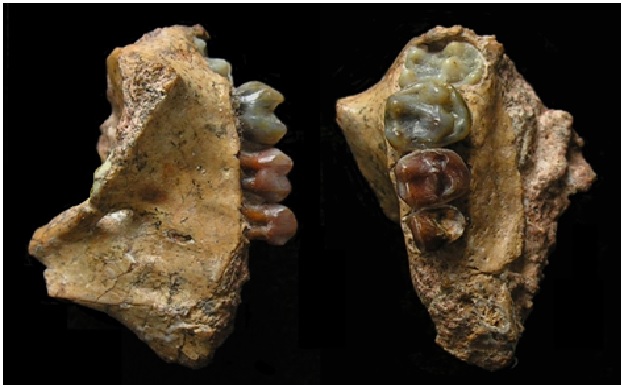New Discovery Fills Long-Missing Gap in Evolutionary History
The oldest gibbon fossil was discovered in southwest China. The earliest gibbon fossil has been found by a team of researchers, filling a long-missing evolutionary gap in the history of apes. The study, which was published in the Journal of Human Evolution, focuses on the hylobatid family of ape.
The oldest gibbon fossil was discovered in southwest China.Journal of Human EvolutionNew York UniversityYuanmoupithecusxiaoyuan, which included an upper jaw from a young child who was less than two years old at the time of its death.remains have been found. Credit: Terry Harrison, NYU’s Department of Anthropologywas estimated to be close in size to modern-day gibbons, with a body weight of roughly 6 kilograms—or about 13 poundsare very similar to those of modern-day gibbons, but in a few features the fossil species was more primitive and points to it being the ancestor of all the living species,” observes Harrison, part of NYU’s Center for the Study of Human Origins. [1]

Figure 1. New Discovery Fills Long-Missing Gap in Evolutionary History
Figure 1 shows the fossil, discovered in the Yuanmou area of Yunnan Province in southwestern China, is of a small ape called Yuanmoupithecusxiaoyuan. The analysis, which included Xueping Ji of the Kunming Institute of Zoology and the lead author of the study, focused on the teeth and cranial specimens of Yuanmoupithecus, including an upper jaw of an infant that was less than 2 years old when it died.
Using the size of the molar teeth as a guide, the scientists estimate that Yuanmoupithecuswas similar in size to today's gibbons, with a body weight of about 6 kilograms or about 13 pounds. [2]
“The teeth and the lower face of Yuanmoupithecus are very similar to those of modern-day gibbons, but in a few features the fossil species was more primitive and points to it being the ancestor of all the living species,” observes Harrison, part of NYU’s Center for the Study of Human Origins.
“Genetic studies indicate that the hylobatids diverged from the lineage leading to the great apes and humans about 17 to 22 million years ago, so there is still a 10-million-year gap in the fossil record that needs to be filled,” Harrison cautions. “With the continued exploration of promising fossil sites in China and elsewhere in Asia, it is hoped that additional discoveries will help fill these critical gaps in the evolutionary history of hylobatids.” [3]
References:
- https://headtopics.com/us/new-discovery-fills-long-missing-gap-in-evolutionary-history-31274398
- https://www.sciencedaily.com/releases/2022/09/220914102015.htm
- https://scitechdaily.com/new-discovery-fills-long-missing-gap-in-evolutionary-history/
Cite this article:
Thanusri swetha J (2022) New Discovery Fills Long-Missing Gap in Evolutionary History, Anatechmaz, pp. 422

